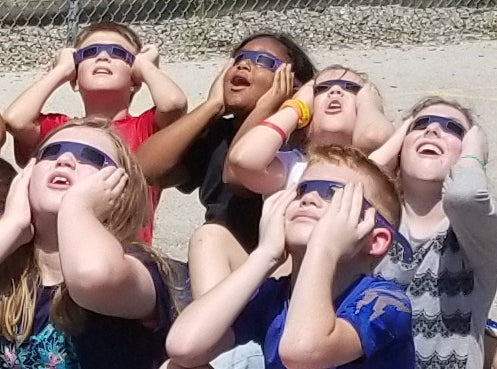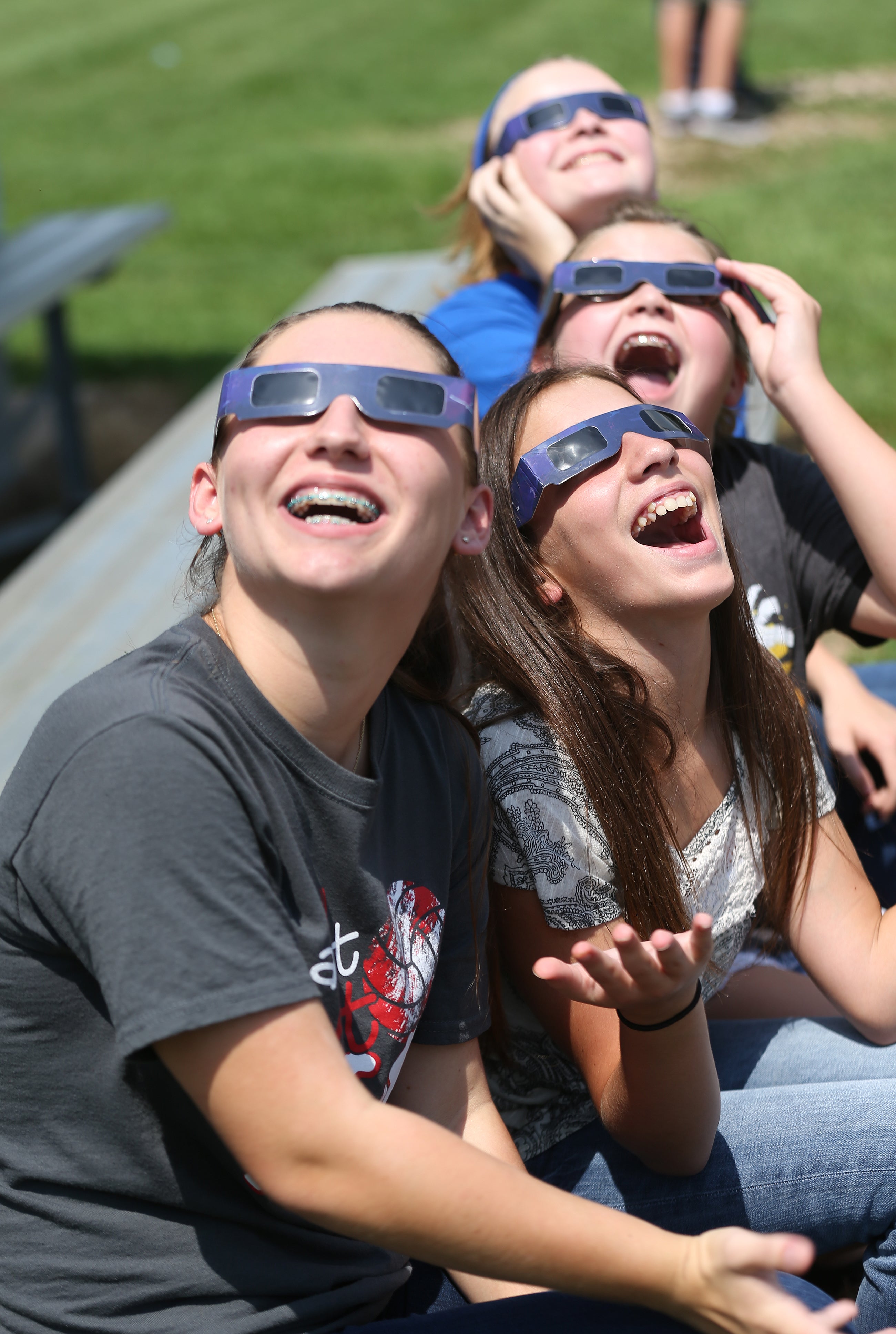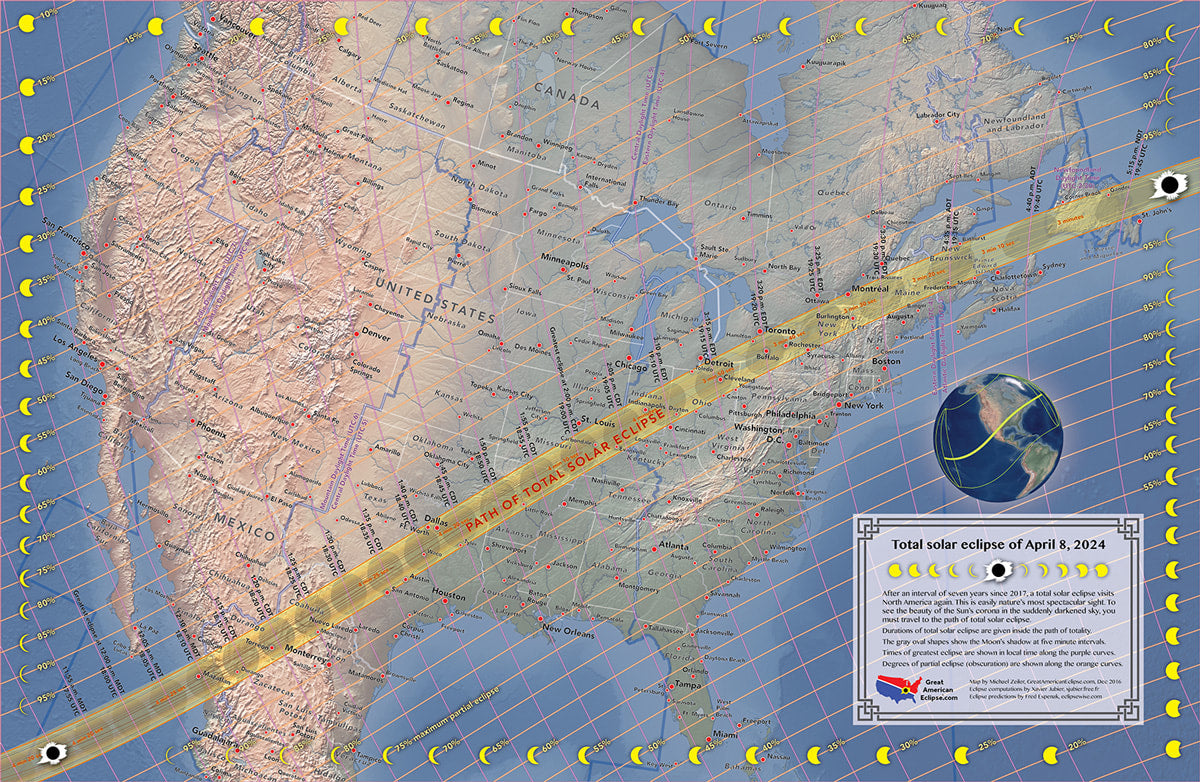

Get your classroom ready with some educational resources and lesson plans below!
NASA, the American Astronomical Society, and many more have great lesson plans to help you build excitement for the eclipse. Remember, no matter where you are, you need eclipse glasses.
What is a solar eclipse (for students)?
K-12 Educational Resources
Education & Outreach Resources
This data is gathered from a number of great sites, including the aas.org, NASA< and many more. Please check them out for even more resources.
A great teaching guide with a bunch of fun ideas (download here).
Resources from the Astronomical Society of the Pacific (ASP)
- ASP Eclipse Home Page
- Eclipse Ambassadors Program
- Eclipse Ambassadors Resources
- ASP Eclipse Stars for Educators
- ASP Eclipse Stars for Scientists
- ASP's Eclipse Shop (Books, Viewing Devices, Activity Kits & More)
- Yardstick Eclipse Activity Kit
Resources from the National Science Teaching Association (NSTA)
- NSTA Eclipse Home Page
- Solar Science: Exploring Sunspots, Seasons, Eclipses, and More by Dennis Schatz & Andrew Fraknoi (book)
- When The Sun Goes Dark by Andrew Fraknoi and Dennis Schatz (book)
- Eclipse Guide for Educators (PDF)
- Eclipse Guide for Administrators (PDF)
- Handouts for Family & Friends (PDF)
Resources from Andrew Fraknoi (Fromm Institute, Univ. of San Francisco)
- How to Find an Eclipse Expert (PDF)
- Selected Eclipse Activities for Educators (PDF)
- Resources Connecting Eclipses and Other Fields (PDF)
Resources from SEAL: Solar Eclipse Activities for Libraries
- SEAL Eclipse Home Page
- Guide for Libraries & Communities (PDF [note: 34 MB])
- Solar Eclipse Activities for Libraries & Other Educational Settings
Resources from the Exploratorium (San Francisco, California)
Resources from NASA's PUNCH Mission Outreach Team
Resources from NASA
Some fun ideas from Scholastic
7 Activities to Get Kids Excited for the Solar Eclipse
Are your kids excited for the historic eclipse? Share these activities to get ready for the big day.
BYLIZ HEINECKE AND SCHOLASTIC PARENTS STAFFFEB 16, 2024
AGES
6-13
The total solar eclipse of 2024 will happen on Monday, April 8. Whether you’re planning to travel into the path of totality to watch day turn into night, or just head outside to check it out, it will be a great opportunity to make some memories. Here are some ideas to help you and the kids get ready for the big day.
1. Find out what time the moon will be passing between you and the sun. Using NASA’s eclipse map, you see when the eclipse will start, when the maximum coverage will occur, and how much of the sun will be covered (obscuration).
2. Make a pinhole viewer. Remind your kids that looking directly at the sun is very dangerous, but that it’s okay to stand with the sun behind them and watch the eclipse indirectly using a pinhole viewer. They'll have fun making one themselves, using a shoe box, some foil, and a pin!
3. Order ISO-approved solar glasses. NASA has a fantastic guide to solar eclipse eye-safety and a link to a list of vendors who sell solar glasses that block out enough of the Sun’s powerful rays to allow you to safely view the eclipse directly.
4. Create sun prints. Human eyes can’t see ultraviolet light, but using construction paper, kids can create sun prints to see for themselves how the sun’s powerful UV rays break down dyes and bleach paper.
5. Pop a balloon using the sun’s energy. With the sun behind you and a magnifying glass in hand, it’s fun to pop an inflated balloon by focusing the sun’s hot energy on a tiny spot! Tell your kids, during a total eclipse, that the sun’s rays are completely blocked out by the moon and the temperature actually drops a little bit in the moon’s shadow.
6. Learn more about the sun, space, and the universe. How does our sun fit into the universe? Here are some great books about space that will inspire your young scientists to learn more about our galaxy.
7. Download an Eclipse app. There are a number of apps, including the free Totality by Big Kid Science app, which puts interesting and useful information at your fingertips. Don't miss their link to NASA’s total Eclipse website, where you can find lots of cool eclipse facts and watch the eclipse live if you find yourself under cloudy skies on August 21st.
The next total eclipse won’t cross the continental United States until 2044, so don’t miss this chance to experience this rare phenomenon with your kids. Whether you’re lucky enough to see the sun’s corona, or you’re in a spot where the moon takes a big bite out of the sun, it promises to be an amazing show.

The path of the Eclipse
The Eclipse will be visable across the continental United States in the middle of the day!
